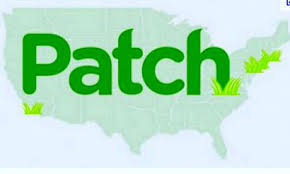
I take great delight in the Carlsbad Patch updates on my smartphone every morning. And the Fwix local app on my iPad. But why do I feel they are my “guilty pleasures”? Because there is a rap out there that hyperlocal doesn’t scale and these are toys.
Is it still the case?
Patch now has a local presence in 600 communities, with editorial and sales “pods” of 12 each. Some are being run by longtime newspaper industry leaders (such as former SignOn San Diego leader Chris Jennewein and ex-NAA New Media Federation staffer Beth Lawton).
Last Sunday, LA Times media columnist James Rainey wrote that Patch is revitalizing local journalism and asserted that may have become THE place for journalists to go (aside from wages of $35k-$50k, or half the salary that big city journalists might have gotten from the big metro, if they were hiring).
That’s fine by Patch President Warren Webster. At ILM:10, Webster didn’t dispute my characterization of Patch as an experiment that wants to quickly get a national footprint to attract national, regional and local advertisers; create a business directory that goes beyond the Yellow Pages; and scale editorial and sales resources.
On a macro level, local ad revenues typically split 50/50 between targeted national and local. For Webster (and cohorts Jon Brod of AOL Ventures, and AOL Chief Tim Armstrong), the bet is that Patch is poised to do both. They’ve publicly said they were spending $50 million to ramp it up in 2010.
Sites such as Main Street Connect and Hello Metro are going down much the same path — although they likely aren’t as focused on winning national dollars as yet. Main Street Connect in the NY metro area has raised $4 million for its effort, and recently signed up Carl Lavin from The Philadelphia Inquirer (and more recently, Forbes) to run its own editorial pods. Many single city efforts have also launched, such as Allbritton’s TBD.com in the Washington metro area.
Sales aren’t guaranteed for any of these. It remains tough to get through to SMBs — note the partial retreat of The New York Times, which offloaded The Local, its hyperlocal effort.
But for the sites that green-light hyperlocal, the hypothesis is they’ll get to local advertisers with local sales forces, and advertisers will follow an audience — especially the affluent, suburban audience targeted in many of these sites. Which brings us to the biggest question for 2011. It isn’t about sales quotas. That’s premature. It’s the audience question.
The audience question is a big “if.” Some of the sites hope to differentiate themselves with audiences via higher quality, more targeted local content or better mapping. But they face super-fragmentation, with at least five or six sources of “good enough” local info, as well as possibly declining user interest in local news in an age of urban sprawl. It is an issue made even more complex by aggregators, where they all feature each other’s content.
Sites that are focused more on geographic aggregation for media partners, such as Topix, Outside.in. Fwix, DataSphere and Everyblock. Local event and news site such as AmericanTowns.com, Center’d and DiscoverOurTown are also part of the mix.
Some of the aggregators are also supported by unique user-generated content and pro/amateur content farms, such as Examiner.com, Associated Content, Demand Media, Helium, MerchantCircle Studios and others.
Examiner.com, by itself, may actually have many times the traffic of a Patch, as CEO Rick Blair notes. Yahoo’s $100 million acquisition of Associated Content this year may have similar implications.
So as we end 2010, and think about 2011, do we think that hyperlocal is going to begin to cut it? One assumes there will inevitably be a shakeout and shutdowns in the coming year. And there will also be smarter ways to economize via user-generated content and aggregation. The all-purpose use of the “hyperlocal” term will also fall by the wayside.
But if more of us find our guilty pleasures from checking out the hyperlocal news on our smartphones and our iPads, and sneaking peeks on our PCs during the day — there is simply no reason to think it will generally fail.
This Post Has One Comment
Leave a Reply
You must be logged in to post a comment.

I just started my own hyperlocal experiment – LocalByUs
Content – User generated.
Revenue Model – google ads.
Geo-coding – all content tagged by latitude and longitude.
Will see how the experiment goes.